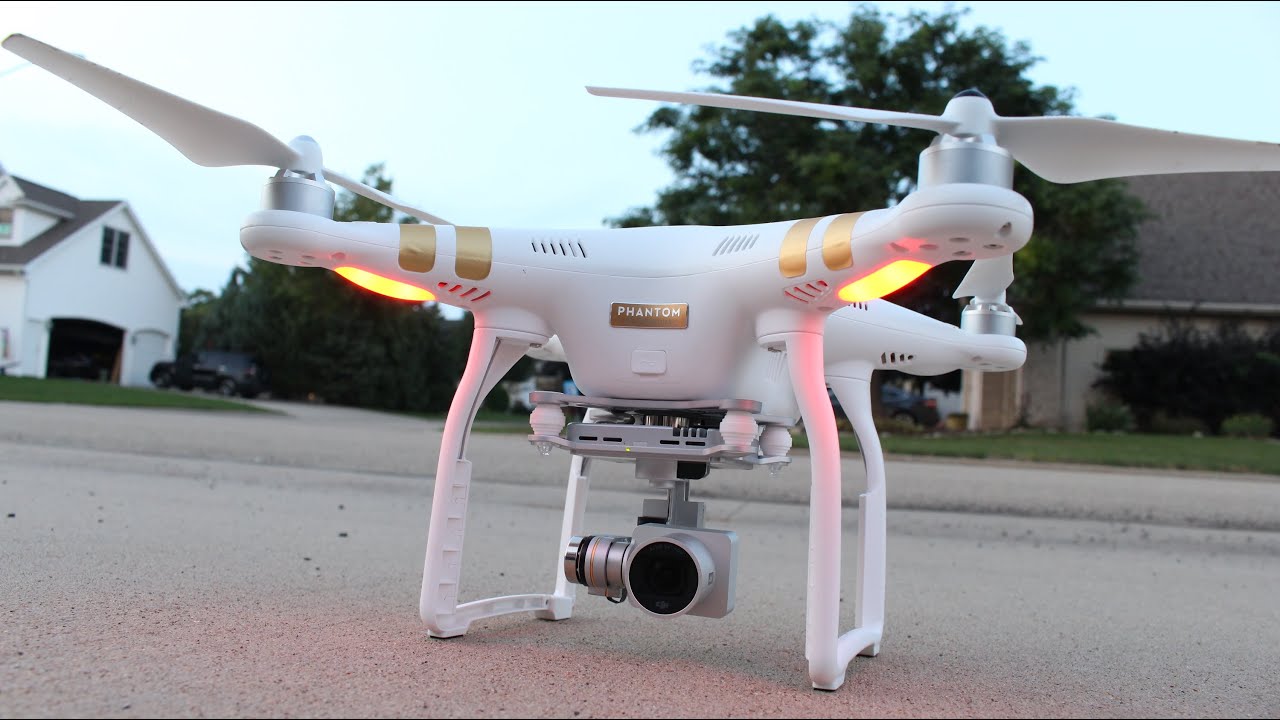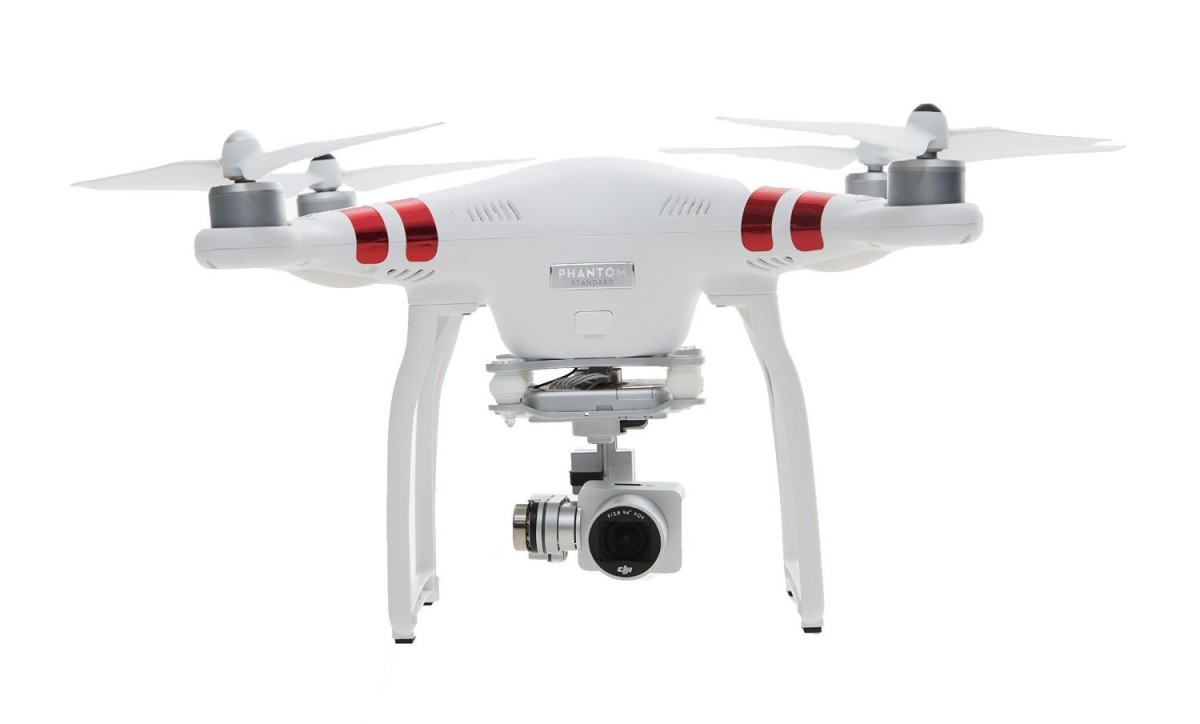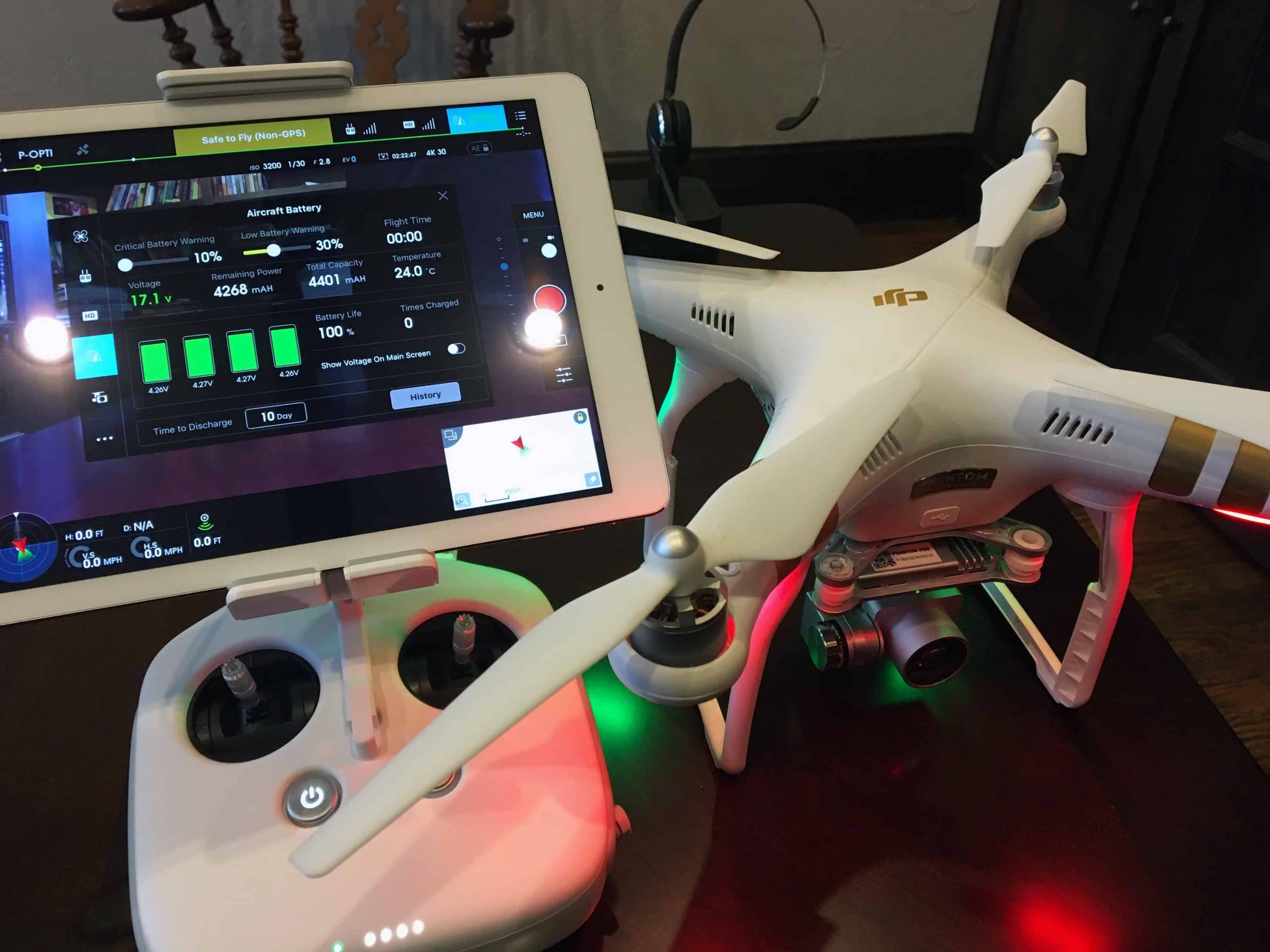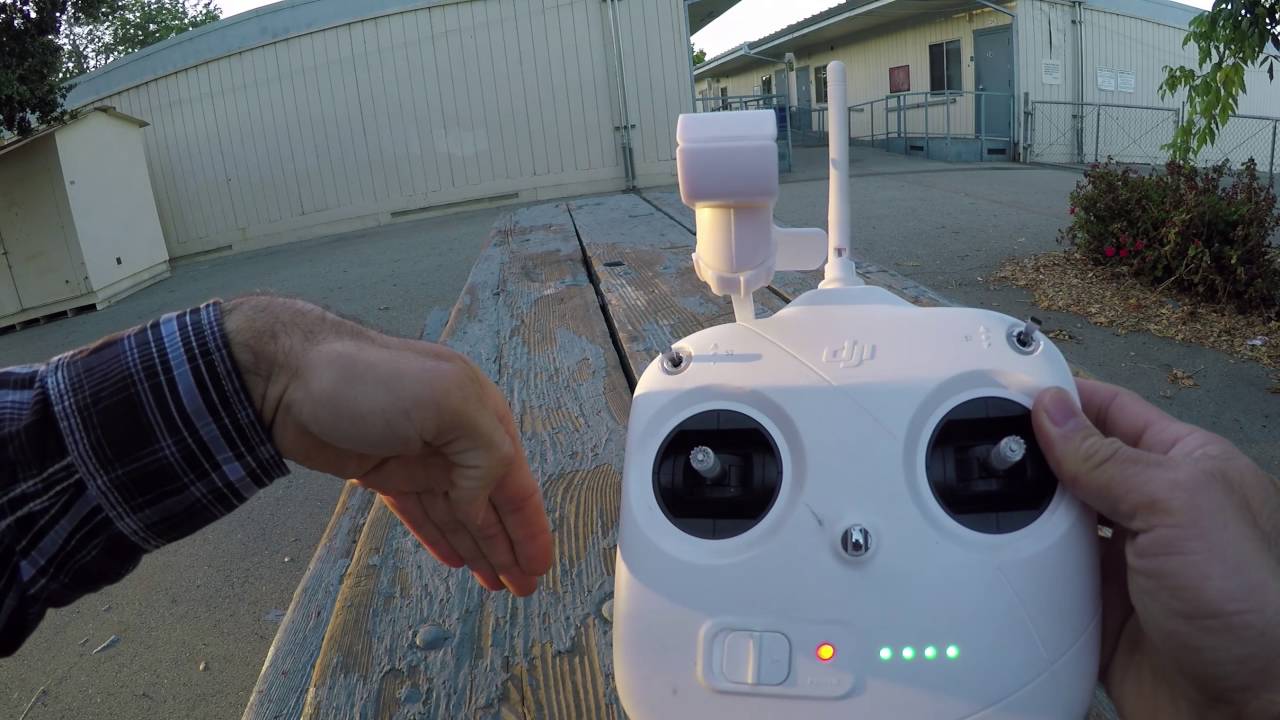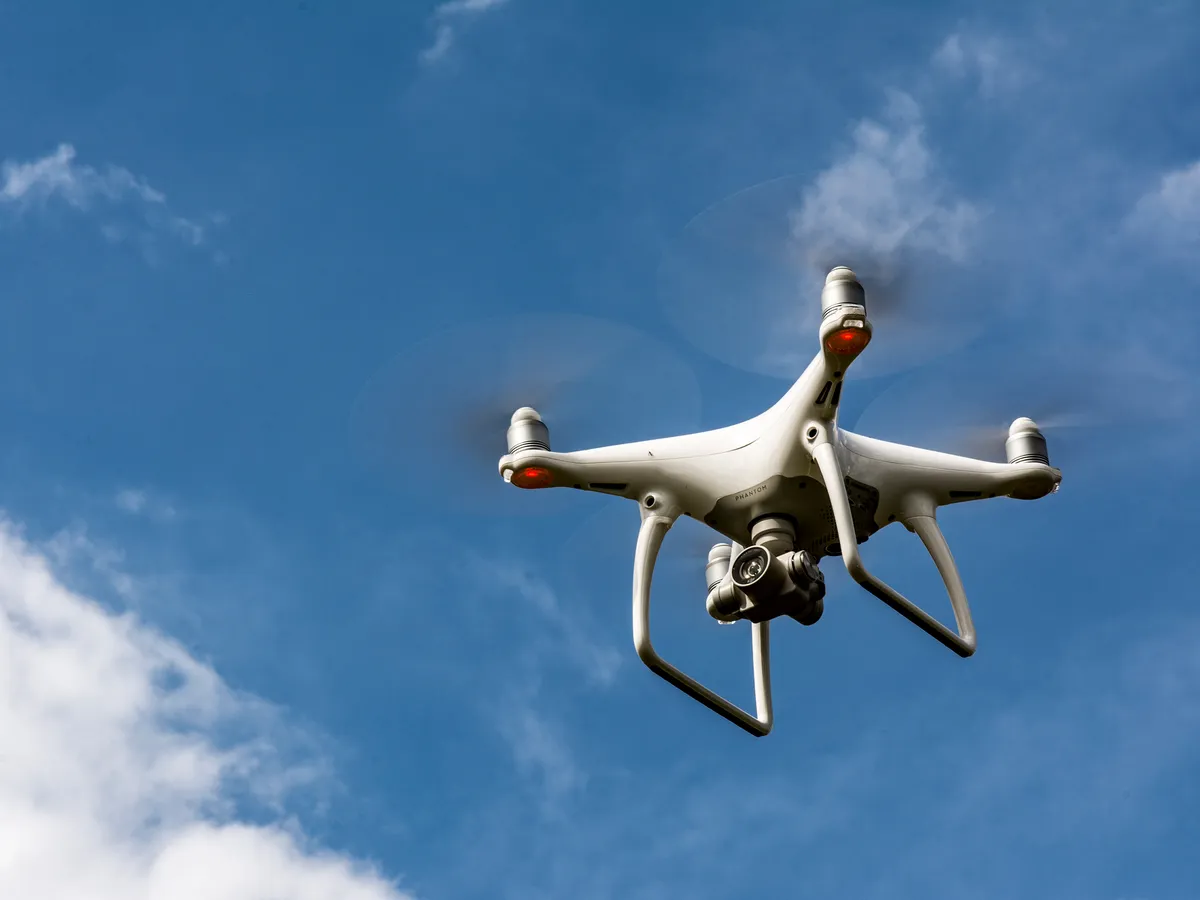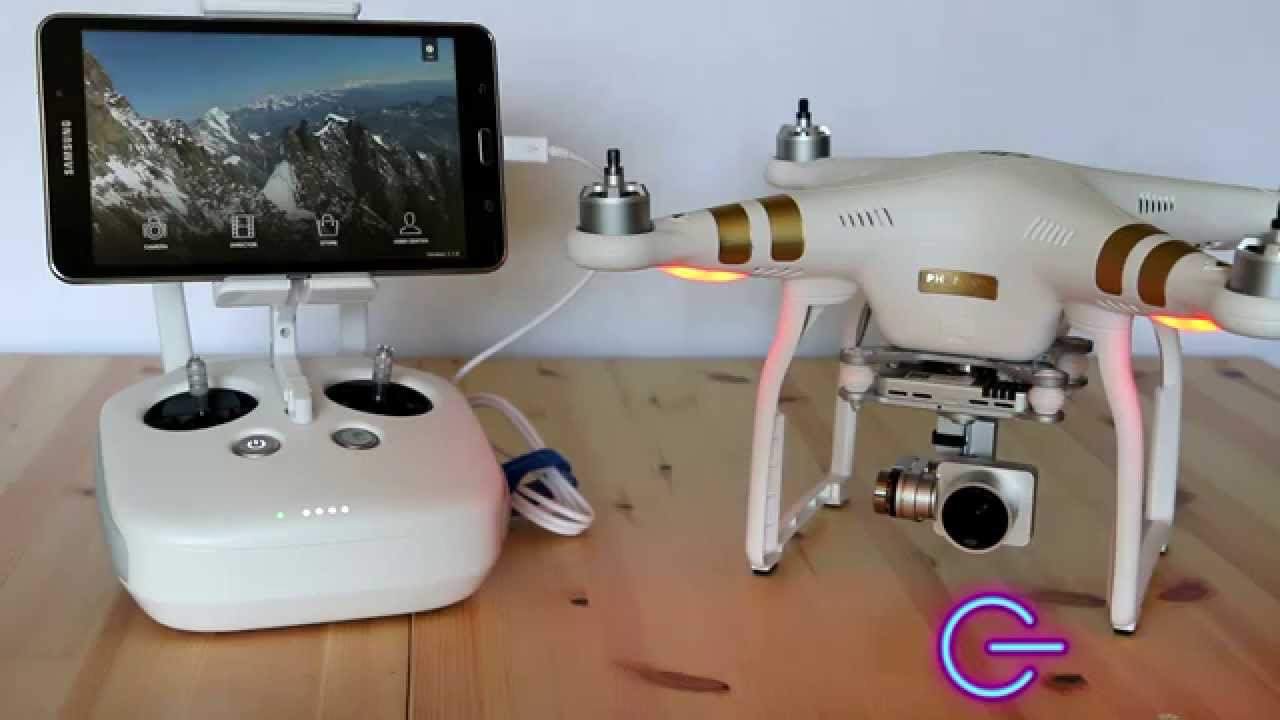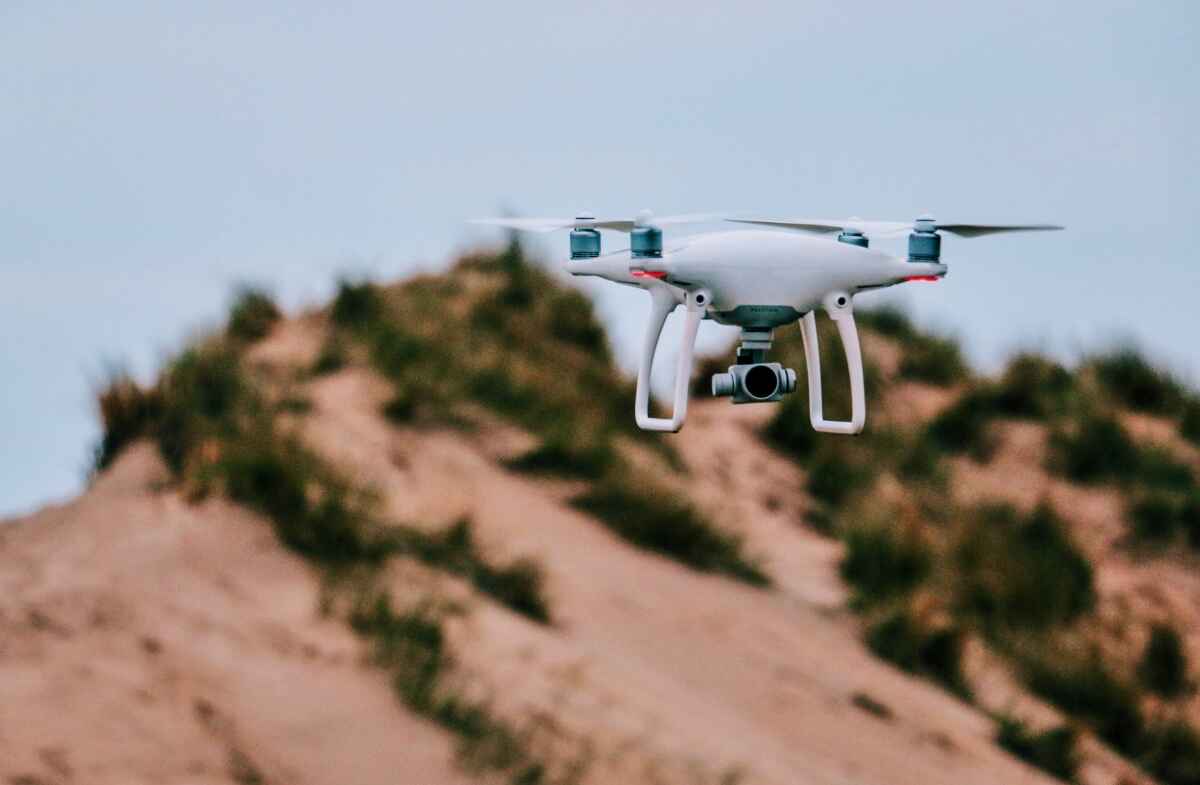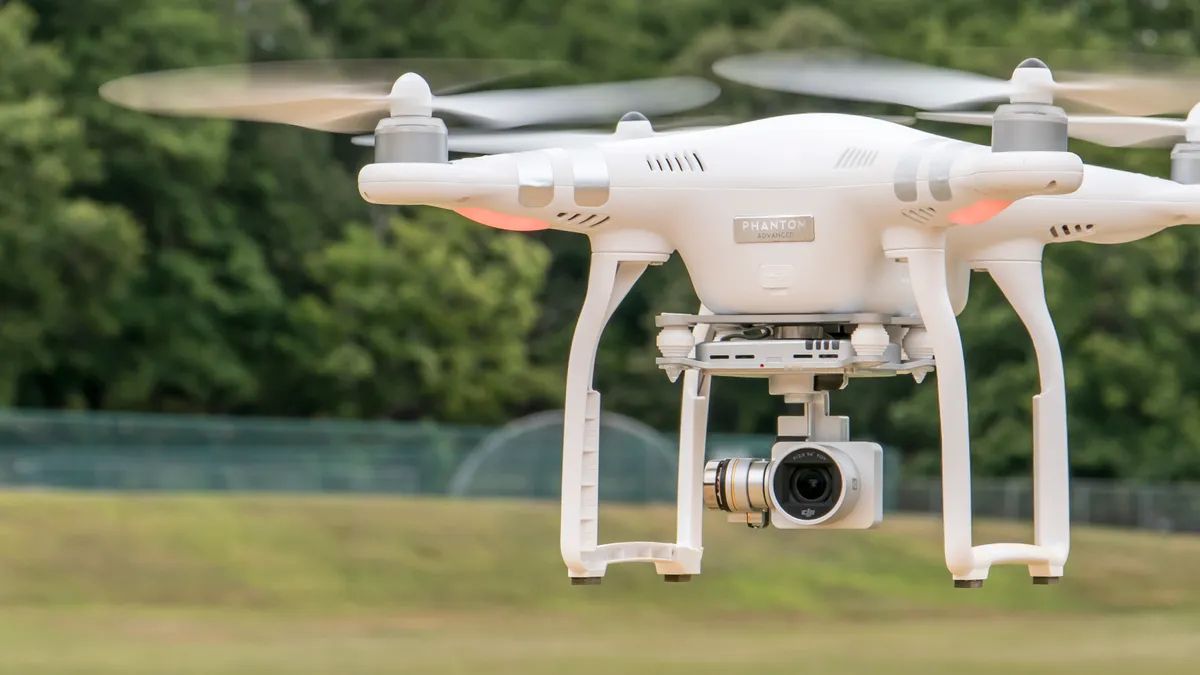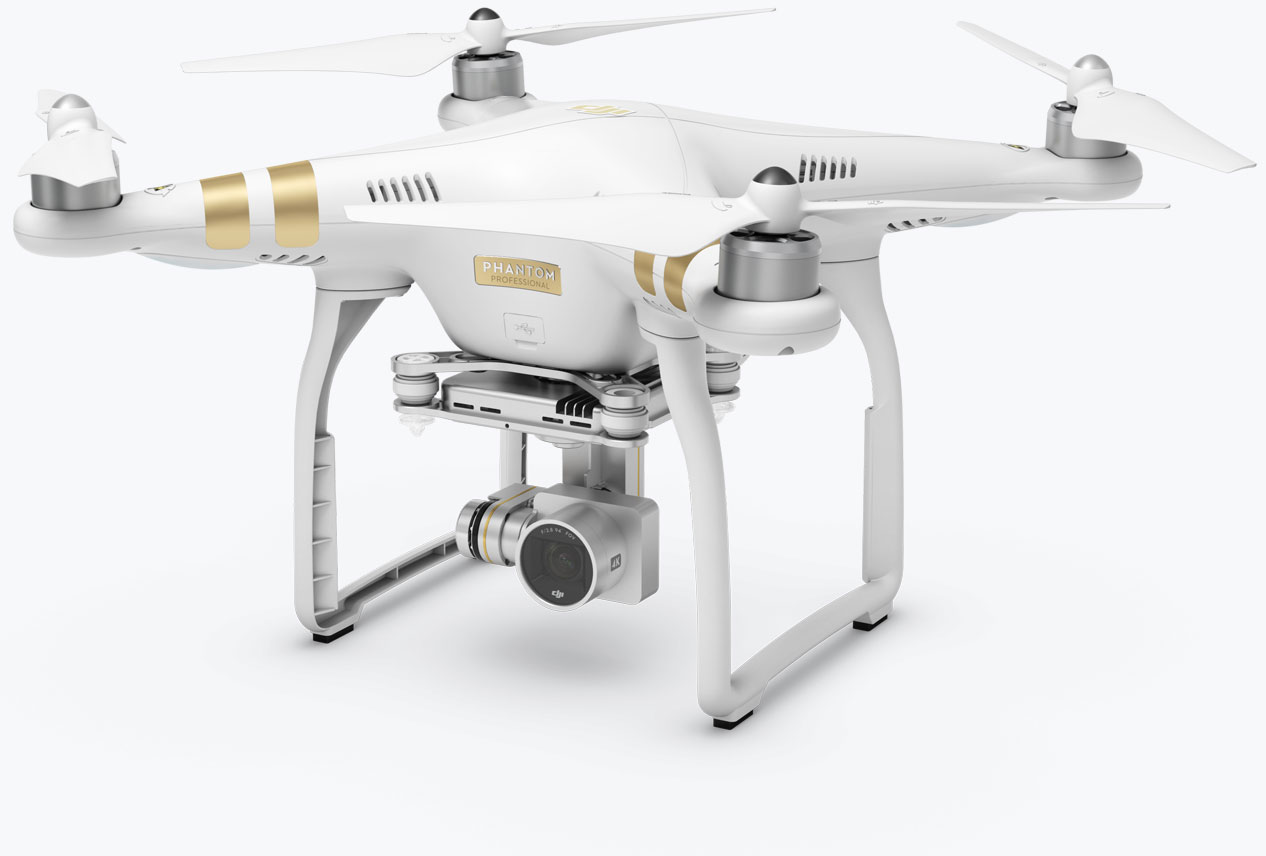Introduction
Welcome to the exciting world of drone flying! With the advent of modern technology, flying drones has become accessible to the masses, allowing anyone to experience the thrill of taking to the skies. One of the most popular and reliable drone models available today is the Drone Phantom 3. Whether you’re a beginner or an experienced drone pilot, the Phantom 3 offers an incredible flying experience and a plethora of features that will take your aerial photography and videography to new heights.
However, flying a drone, especially a sophisticated model like the Phantom 3, requires some basic knowledge and understanding of its controls and functionalities. This comprehensive guide will walk you through the process of flying a Drone Phantom 3, providing you with everything you need to know to take off, navigate the skies, and capture stunning shots with your drone.
Before we dive into the nitty-gritty details of flying a Drone Phantom 3, it’s important to note that safety should always be your top priority. You should familiarize yourself with your local regulations regarding drone flying and follow best practices to ensure both your safety and the safety of those around you.
So, whether you’re looking to explore the world from a bird’s eye view, capture breathtaking aerial shots, or simply have fun flying a drone, let’s get started on this exciting adventure with the Drone Phantom 3.
Choosing the Right Drone Phantom 3
When it comes to choosing a drone, the Drone Phantom 3 is a fantastic option. However, there are a few different models within the Drone Phantom 3 series, each offering its own set of features and capabilities. Here are some factors to consider when selecting the right Drone Phantom 3 for your needs.
1. Budget: Determine your budget range for purchasing a drone. The Drone Phantom 3 comes in various models, ranging from the more affordable Standard version to the advanced Professional and Advanced versions. Consider how much you’re willing to invest in a drone and choose a model that fits your budget.
2. Camera Quality: If aerial photography or videography is your main focus, pay attention to the camera capabilities of each Drone Phantom 3 model. The Professional and Advanced versions offer higher-resolution cameras and advanced features like RAW image capture, providing you with superior image quality.
3. Flight Performance: Consider the flight performance specifications of each model, including flight range, maximum speed, and battery life. The Advanced and Professional versions typically offer longer flight ranges and longer battery life compared to the Standard version.
4. GPS and Navigation: Look for drones equipped with GPS and advanced navigation systems. The Drone Phantom 3 models all have built-in GPS, enabling precise positioning, automatic return-to-home functions, and intelligent flight modes.
5. Controller and App: Evaluate the controller and accompanying app for ease of use and functionality. The Drone Phantom 3 models come with intuitive controllers and powerful apps that allow you to control the drone, adjust camera settings, and view live footage from your mobile device.
By considering these factors, you can select the right Drone Phantom 3 model that aligns with your needs and budget. Remember to also check for any additional accessories or bundles that may be available, such as extra batteries, carrying cases, or propeller guards, to enhance your flying experience.
Understanding the Basic Controls
Before taking to the skies with your Drone Phantom 3, it’s crucial to familiarize yourself with the basic controls. Understanding how to operate the drone will not only ensure a smoother flight experience but also help you avoid any potential accidents. Here’s a breakdown of the essential controls you need to know:
1. Powering On and Off: To power on the Phantom 3, press and hold the power button located on the battery. Release the button once the battery LEDs light up. To power off, press and hold the power button again until the LEDs turn off.
2. Flight Modes: The Phantom 3 offers different flight modes to suit various flying scenarios. The most common modes are GPS mode, which provides stable hovering and automatic position holding, and Attitude mode, which disables GPS and allows for more manual flying control.
3. Throttle and Altitude Control: The left joystick on the controller is used to control throttle, which determines the vertical movement of the drone. Push the joystick upward to increase altitude and downward to decrease altitude.
4. Yaw Control: The right joystick controls yaw, which is the rotation of the drone. Moving the joystick left or right will rotate the drone in the corresponding direction.
5. Roll and Pitch Control: The right joystick also controls roll and pitch, which are the horizontal movements of the drone. Pushing the joystick forward or backward controls pitch, while moving it left or right controls roll.
6. Intelligent Flight Modes: The Drone Phantom 3 offers intelligent flight modes that can enhance your flying experience. These modes include Follow Me, Waypoints, and Point of Interest, which allow the drone to automatically track and follow objects or follow pre-set flight paths.
Take the time to practice using the controls in a safe and open area before attempting more complex flights. Familiarize yourself with the flight controls and how they respond to different inputs. This will give you greater confidence and control while flying your Drone Phantom 3.
Preparing Your Drone for Flight
Before you embark on your drone flying adventure with the Drone Phantom 3, it’s essential to properly prepare your drone and ensure that everything is in proper working order. By following these steps, you’ll enhance the safety and performance of your flight:
1. Check Your Batteries: Make sure that both the drone battery and the remote controller battery are fully charged. Inspect the batteries for any signs of damage or wear and replace them if necessary. A fully charged battery will provide you with a longer and more enjoyable flight experience.
2. Verify GPS Signal: Ensure that your drone has a strong GPS signal before taking off. This will ensure precise positioning and enable features such as the Return-to-Home function. Wait until your drone has acquired strong GPS signals before proceeding with the flight.
3. Inspect the Drone: Before every flight, visually inspect your Drone Phantom 3 for any signs of physical damage or loose parts. Check the propellers for any dirt, debris, or damage, and securely attach them to the motors. Ensure that the camera lens is clean and free from any obstructions.
4. Calibrate the Compass: Compass calibration is essential for accurate navigational control. Follow the manufacturer’s instructions to calibrate the compass before your first flight or if you’re flying in a new location. Most Phantom 3 models have an easy-to-follow on-screen guide to assist with the calibration process.
5. Choose a Suitable Location: Select an open area with minimal obstacles to avoid any potential collisions or interference. Flying in a large field or open park is ideal for your first flight. Check for any local rules or regulations regarding drone flying in the area.
6. Secure the Propellers: Before takeoff, ensure that the propellers are securely fastened to the motors. Follow the propeller installation instructions provided by the manufacturer to ensure proper attachment. Loose propellers can lead to unstable flight or even accidents.
7. Activate the Camera: If you plan to capture photos or videos during your flight, activate the camera by connecting your smartphone or tablet to the remote controller and launching the drone’s app. Familiarize yourself with the controls and camera settings before takeoff.
By taking these necessary steps to prepare your Drone Phantom 3 before each flight, you’ll minimize the risk of accidents and maximize your enjoyment of the flying experience. Safety should always be your priority, so never skip these important pre-flight checks.
Taking Off and Landing
Taking off and landing your Drone Phantom 3 may seem like simple tasks, but they require precision and caution to ensure a safe flight experience. Here’s a step-by-step guide on how to take off and land your drone:
Taking Off:
- Clear the area around you and make sure there are no obstructions or people nearby.
- Power on your Drone Phantom 3 by pressing and holding the power button on the battery until the LEDs light up.
- Ensure that the drone has a strong GPS signal for stable flight. Wait for the LEDs on the drone to indicate that it has acquired the necessary GPS signals.
- Hold the remote controller and position the control sticks so that they are in the center position.
- Press the takeoff button (usually located on the app or the controller) to initiate the takeoff sequence.
- As the drone hovers in place, adjust the throttle control to increase altitude and begin your flight.
Landing:
- Find a safe and open area to land your Drone Phantom 3.
- Gradually reduce the altitude of the drone by decreasing the throttle control on the remote controller.
- Use the right joystick to control the drone’s descent and bring it down gently.
- Continue to monitor the drone’s position and adjust the throttle as necessary to ensure a smooth landing.
- Once the drone is close to the ground, carefully cut the throttle to bring the drone to a complete stop.
- Power off the drone by pressing and holding the power button on the battery until the LEDs turn off.
It’s important to note that during takeoff and landing, you should maintain a safe distance from people, buildings, and other aircraft. Follow the manufacturer’s instructions and local regulations to ensure a safe and controlled flight experience.
Practice these takeoff and landing procedures in a controlled and open area before attempting more complex maneuvers or flights. With time, you’ll become more proficient at handling your Drone Phantom 3, leading to smoother takeoffs and landings.
Navigating Your Drone
Once your Drone Phantom 3 is airborne, it’s time to explore the skies and navigate your drone with confidence. Understanding the different flight controls and modes will allow you to maneuver your drone smoothly and capture stunning aerial footage. Here are some key points to keep in mind:
1. Utilizing the Control Sticks: The control sticks on the remote controller are your primary means of navigating the drone. The left stick controls throttle and altitude, while the right stick controls yaw, roll, and pitch. Familiarize yourself with these controls and practice their movements to achieve precise and controlled flight.
2. Flying in GPS Mode: By default, the Drone Phantom 3 operates in GPS mode, which provides enhanced stability and positioning. This mode uses GPS signals to help the drone hover in place and maintain a steady position. Use GPS mode for general flying and capturing steady shots.
3. Activating Intelligent Flight Modes: The Drone Phantom 3 offers various intelligent flight modes that enhance your aerial photography and videography. These modes include Follow Me, Waypoints, and Point of Interest. By activating these modes through the drone’s app, you can automate certain flight paths and shots, allowing you to focus on capturing the perfect footage.
4. Adjusting Flight Speed: Depending on your flying preferences and the shots you want to capture, you can adjust the flight speed of your Drone Phantom 3. Slow flight speeds are ideal for smooth and cinematic shots, while higher speeds can be used for capturing action-packed footage. Experiment with different speeds to achieve the desired effect.
5. Monitoring Battery Life: Keep a close eye on the drone’s battery life during flight. Most Drone Phantom 3 models provide battery level indicators on both the drone and the app. It’s essential to reserve enough power to safely land the drone. If the battery level is low, initiate the return-to-home function or manually bring the drone back for landing.
6. Obstacle Avoidance: While the Drone Phantom 3 models do not have obstacle avoidance sensors, it’s crucial to maintain visual contact with the drone and be aware of your surroundings. Avoid flying near trees, power lines, buildings, or other potential obstacles that may pose a risk to the drone’s flight path.
Remember, practice makes perfect when it comes to navigating your Drone Phantom 3. Familiarize yourself with the controls, flight modes, and capabilities of your drone. By mastering these navigation techniques, you’ll be able to capture breathtaking footage and enjoy a thrilling flying experience.
Capturing Stunning Aerial Shots
One of the most exciting aspects of flying a Drone Phantom 3 is the ability to capture stunning aerial shots from unique perspectives. With some creativity and knowledge of camera settings, you can elevate your photography and videography skills. Here are some tips for capturing breathtaking aerial shots:
1. Use the Rule of Thirds: Apply the rule of thirds to compose your shots. Imagine dividing your frame into nine equal sections, with key elements placed along the intersecting lines or at their intersections. This will create a visually balanced and appealing composition.
2. Experiment with Angles and Perspectives: Don’t be afraid to experiment with different angles and perspectives. Fly high for a bird’s-eye view, or fly low to capture unique details. Tilt the camera slightly to add a dynamic element to your shots. By exploring different angles, you can create visually captivating shots.
3. Consider Lighting Conditions: Pay attention to the lighting conditions when capturing aerial shots. Take advantage of the golden hour, which is the hour after sunrise or before sunset when the light is soft and warm. Avoid shooting during harsh midday sun, as it can create strong shadows and wash out colors.
4. Adjust Camera Settings: Experiment with different camera settings to achieve the desired look. Enable the HDR mode for more balanced exposure in challenging lighting conditions. Adjust the ISO and shutter speed to control the amount of light and motion blur in your shots. Shoot in RAW format for more flexibility in post-processing.
5. Incorporate Foreground Elements: Add depth and interest to your shots by incorporating foreground elements. This could be a tree branch, a building, or a person. Including foreground elements in your composition creates a sense of scale and adds a dynamic element to your shots.
6. Plan Your Shots: Plan your shots in advance to make the most of your flight time. Use map apps or scouting tools to identify interesting locations or landmarks. Visualize the shots you want to capture and plan your flight path accordingly. This will help you make the most of your drone’s battery life and ensure you capture the shots you envision.
7. Smooth Camera Movements: Use the gimbal controls on the remote controller to achieve smooth camera movements. Slow and steady movements result in more professional-looking shots. Experiment with panning, tilting, and tracking shots to add cinematic effects to your footage.
Remember, practice is key when it comes to capturing stunning aerial shots. Take your time to explore different locations, experiment with camera settings, and develop your own unique style. With practice and creativity, you’ll be able to capture breathtaking aerial shots that truly showcase the beauty of your surroundings.
Safety Tips and Guidelines
Safety should always be the top priority when flying a Drone Phantom 3. Following these safety tips and guidelines will help ensure a safe and enjoyable flying experience, both for yourself and those around you:
1. Read the Manual: Before flying your Drone Phantom 3 for the first time, thoroughly read the instruction manual provided by the manufacturer. Familiarize yourself with the drone’s features, controls, and safety guidelines.
2. Follow Local Regulations: Be aware of and follow the local regulations and guidelines in your area regarding drone flying. Familiarize yourself with any airspace restrictions, no-fly zones, and privacy laws that may be in place to ensure compliance and avoid any legal issues.
3. Maintain Line of Sight: Always keep the drone within your line of sight during flight. This will help you maintain control and avoid potential collisions with other objects or aircraft. Avoid flying the drone behind obstacles or out of sight, as it increases the risk of accidents.
4. Fly in Open Areas: Choose wide, open areas away from people, buildings, and airports to fly your Drone Phantom 3. This reduces the risk of collisions and interference with other objects. Avoid crowded areas or events where there may be large gatherings of people.
5. Respect Privacy: While capturing stunning aerial shots is exciting, be mindful of others’ privacy. Avoid flying over private properties without permission and respect the privacy of individuals. Use the camera responsibly and avoid capturing images or videos that may invade someone’s privacy.
6. Be Mindful of Weather Conditions: Weather conditions can greatly impact the safety of drone flights. Avoid flying in strong winds, rain, or other adverse weather conditions that may jeopardize the stability and control of the drone. Check the weather forecast before your flight and plan accordingly.
7. Prepare for Battery Life: Keep track of your Drone Phantom 3’s battery life during flight. Plan your flights accordingly to ensure that you have enough battery power to safely land the drone. Don’t push the limits of the battery and initiate the return-to-home function or manually land the drone when the battery levels are low.
8. Stay Alert and Be Respectful: Remain alert and focused during the entire flight. Avoid distractions and stay mindful of your surroundings. If you see other aircraft or drones in the vicinity, give them the right of way and maintain a safe distance.
9. Regularly Perform Maintenance: Regularly inspect and maintain your Drone Phantom 3 to ensure it is in proper working order. Check for any signs of wear, damage, or loose parts. Keep the drone and its components clean and perform any necessary firmware updates as suggested by the manufacturer.
By adhering to these safety tips and guidelines, you can minimize the risk of accidents and ensure a safe and responsible drone flying experience. Remember, safety should always be prioritized over capturing the perfect shot or video. Enjoy the adventure of flying your Drone Phantom 3 while respecting the rules and regulations in place.
Troubleshooting Common Issues
While flying your Drone Phantom 3 can be an exhilarating experience, you may sometimes encounter common issues that can affect the performance or functionality of your drone. Here are some troubleshooting tips to help you address and resolve these issues:
1. Connection Problems: If you’re experiencing connection issues between your remote controller and the drone, try the following steps:
- Ensure that the batteries in both the remote controller and the drone are fully charged.
- Reset the connection by turning off both the remote controller and the drone, then turning them back on and reconnecting.
- Check for any potential interference sources nearby, such as Wi-Fi networks or power lines, and move away from them.
2. GPS Signal Issues: If you’re having trouble acquiring a strong GPS signal, consider the following troubleshooting steps:
- Make sure you’re in an open area with a clear view of the sky, as obstructions can interfere with the GPS signal.
- Ensure that both the remote controller and the drone are properly calibrated, as inaccurate calibration can affect the GPS signal.
- Update the firmware of your drone and the remote controller to the latest version, as firmware updates often include fixes for GPS-related issues.
3. Erratic Flying Behavior: If your Drone Phantom 3 is flying erratically or seems to be unresponsive to your controls, try these troubleshooting steps:
- Recheck the propellers and make sure they are attached securely and not damaged.
- Verify that the compass is properly calibrated, as an inaccurate compass calibration can cause unpredictable flight behavior.
- Ensure that the drone’s firmware and the remote controller’s firmware are up to date, as firmware updates often address flight performance issues.
4. Battery Issues: If you’re experiencing battery-related issues, such as short flight times or sudden drops in battery level, consider these troubleshooting steps:
- Check the battery connections and make sure they are secure and clean.
- Calibrate the battery by fully discharging and then fully charging it, following the manufacturer’s guidelines.
- Keep the batteries in a cool, dry place when not in use, as extreme temperatures can affect battery performance.
5. Camera Problems: If you’re encountering issues with the camera, such as blurry footage or malfunctioning controls, try the following steps:
- Ensure that the camera lens is clean and free from any smudges or dirt.
- Adjust the camera settings, such as ISO, shutter speed, and white balance, to optimize your footage quality.
- If the problem persists, contact the manufacturer’s customer support for further assistance or consider having it serviced.
If you continue to experience issues with your Drone Phantom 3 that you cannot resolve, it’s recommended to reach out to the manufacturer’s customer support for guidance. They will have the expertise to provide you with more specific troubleshooting steps or arrange for repairs if needed. Remember to always fly responsibly and prioritize safety when troubleshooting or resolving issues with your drone.
Conclusion
Congratulations! You have now gained a solid understanding of how to successfully fly a Drone Phantom 3 and capture amazing aerial shots. By following the guidelines and tips provided in this comprehensive guide, you can embark on thrilling drone flights and unleash your creativity in the world of aerial photography and videography.
Remember, safety should always be your top priority when flying a drone. Familiarize yourself with local regulations, practice responsible flying, and respect the privacy and safety of others. By adhering to these guidelines, you can ensure an enjoyable and incident-free drone flying experience.
From choosing the right Drone Phantom 3 model to understanding the basic controls, preparing for flight, capturing stunning shots, and troubleshooting common issues, this guide has equipped you with the knowledge and skills to navigate the world of aerial photography with confidence and proficiency.
Now, it’s time to spread your wings and explore the skies. Take advantage of your Drone Phantom 3’s capabilities and let your creativity soar. Capture breathtaking aerial shots, tell compelling visual stories, and unlock new perspectives that were once only seen by birds. Embrace the endless possibilities that await you in the sky.
Enjoy your journey as a drone pilot, and may you create unforgettable memories and awe-inspiring content with your Drone Phantom 3. Fly high, fly safe, and let your imagination take flight!







